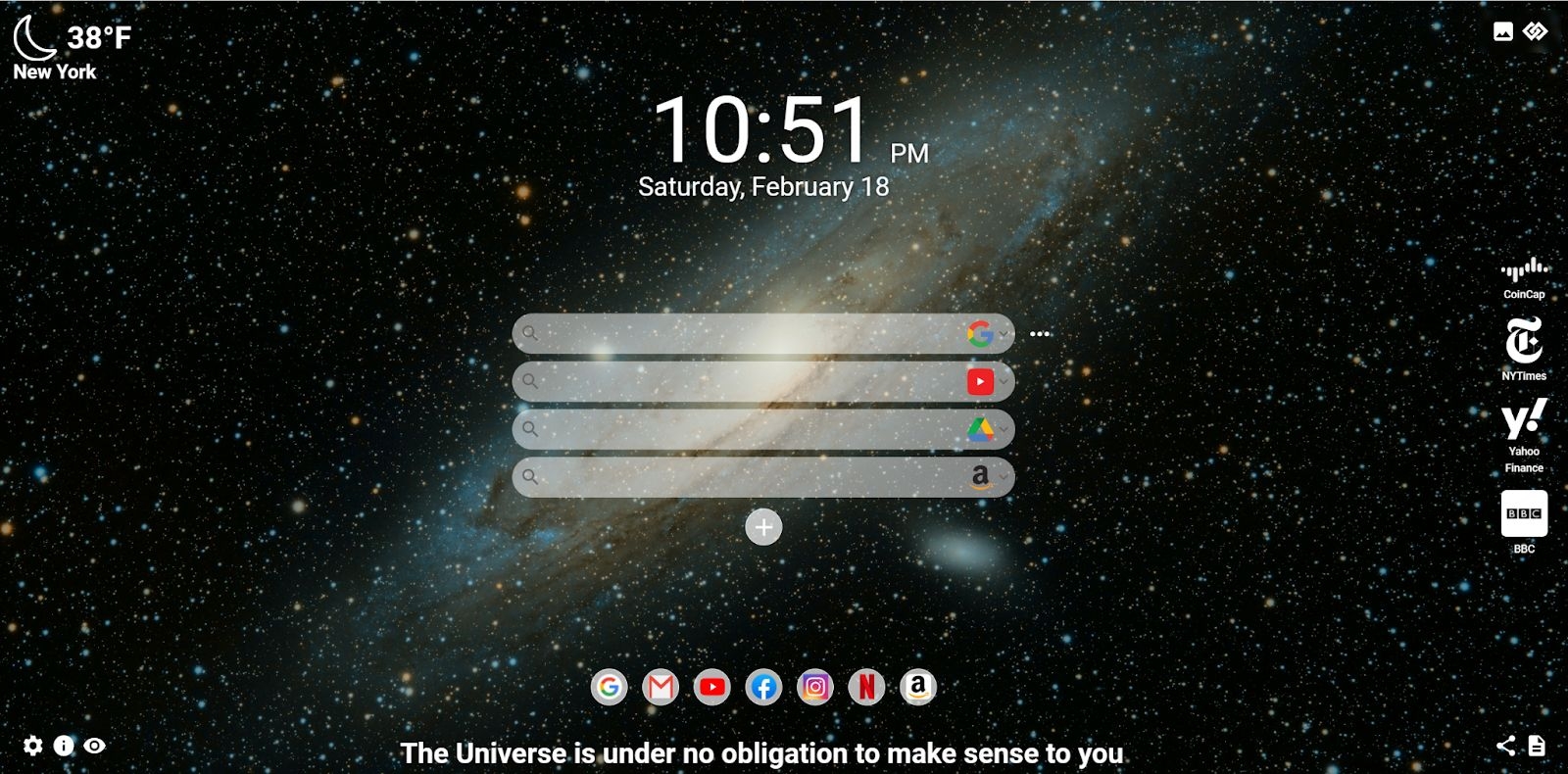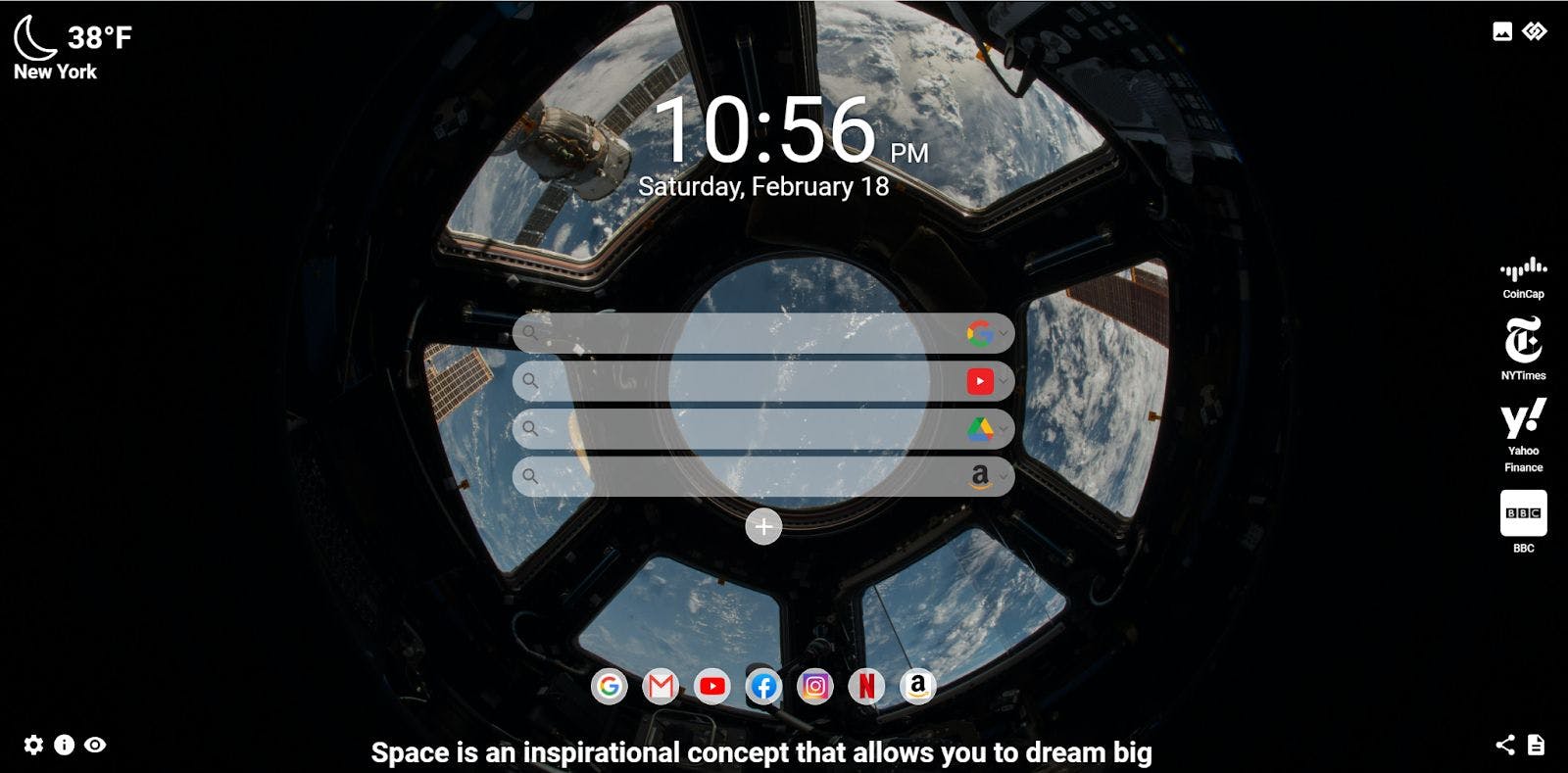Discovering the Vastness of Space: Unveiling Fascinating Space Facts through MeaVana

Introduction:
The universe, with its infinite expanse and countless celestial bodies, has captivated human imagination for centuries. Space exploration has revealed awe-inspiring discoveries and mind-boggling phenomena, inviting us to delve deeper into the mysteries beyond our planet. In this blog, we will embark on a journey to explore some fascinating space facts that highlight the wonders of our cosmic neighborhood. Enjoy a vast collection of space wallpapers and facts on the MeaVana space dashboard.
The Moon's Tidal Lock:
Our nearest celestial neighbor, the Moon, has a peculiar characteristic: it is tidally locked to Earth. This means that the Moon's rotation and revolution take the same amount of time, causing the same face to always be visible from our planet. As a result, we only see one side of the Moon from Earth, while the other side remains hidden. It wasn't until the space age that we were able to capture images and explore the hidden lunar landscape.
The Great Red Spot on Jupiter:
Jupiter, the largest planet in our solar system, boasts a captivating feature known as the Great Red Spot. This massive storm, which has been raging for centuries, is larger than the Earth itself. It is a swirling vortex of clouds, creating a mesmerizing sight on Jupiter's surface. Despite advances in space exploration, we are still unraveling the secrets behind this colossal tempest.
The Intergalactic Wanderer:
In 2017, astronomers discovered an interstellar object named 'Oumuamua. This mysterious visitor originated from outside our solar system and passed through our neighborhood, making it the first-known interstellar object to be detected. Its elongated shape and unusual trajectory have sparked intriguing debates and theories about its origin, leaving us pondering the existence of other interstellar wanderers in the vastness of space.
Black Holes: Cosmic Gravitational Monsters:
Black holes are among the most enigmatic phenomena in the universe. These regions of spacetime exhibit such intense gravitational force that nothing, not even light, can escape their grasp once inside the event horizon. Supermassive black holes, found at the centers of galaxies, can have masses billions of times greater than our Sun. Recent breakthroughs have enabled scientists to capture the first-ever image of a black hole, furthering our understanding of these cosmic behemoths.
The Pillars of Creation:
Located within the Eagle Nebula, approximately 6,500 light-years away from Earth, lies a breathtaking stellar nursery known as the Pillars of Creation. This awe-inspiring photograph, captured by the Hubble Space Telescope, showcases immense columns of gas and dust where new stars are being born. These pillars serve as a reminder of the continuous cycle of creation and destruction in the cosmos, shaping the ever-evolving tapestry of the universe.
The Age of the Universe:
Through the study of cosmic microwave background radiation and other astronomical observations, scientists estimate the age of the universe to be approximately 13.8 billion years. This staggering number not only highlights the immense span of time that has passed since the Big Bang but also emphasizes the incredible opportunities for discovery and exploration that lie ahead.
Conclusion:
The wonders of space continue to captivate our imaginations, pushing the boundaries of scientific knowledge and inspiring generations to explore the cosmos. From the mysteries of black holes to the ever-evolving stellar nurseries, each new discovery adds another piece to the grand puzzle of the universe. As we gaze at the stars above, let us remember that we are part of a vast and interconnected cosmos, inviting us to unravel its secrets and embark on future voyages of exploration. And make sure to check out the MeaVana space dashboard!
